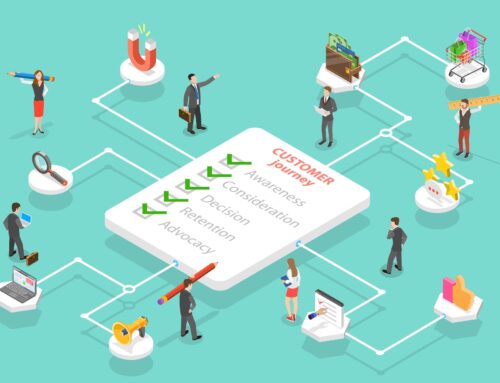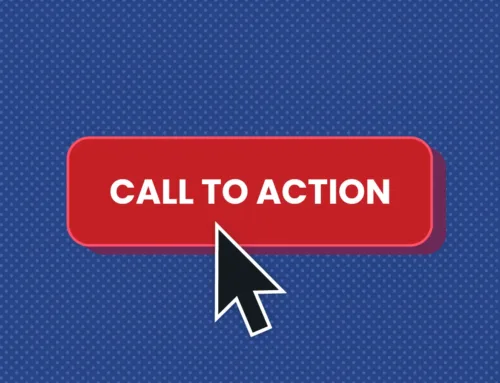Behavioural Triggers: Using Micro-Moments Beyond Search
You’ve heard all about micro-moments in search – those “I want to know,” “I want to go,” “I want to do,” and “I want to buy” spur-of-the-moment queries. But guess what? Micro-moments happen everywhere, not just Google.
Behavioural Triggers: Using Micro-Moments Beyond Search
You’ve heard all about micro-moments in search – those “I want to know,” “I want to go,” “I want to do,” and “I want to buy” spur-of-the-moment queries. But guess what? Micro-moments happen everywhere, not just Google.
Behavioural triggers let you catch users at precise instants across apps, email, social, and in-store—and turn those fleeting impulses into actions. Ignore them, and you’re pissing away revenue. Nail them, and you’ll own moments most marketers don’t even see.
We lay out exactly how to identify, architect, and automate behavioural triggers across channels—so you can deliver the right message at the right time, every single time. We’ll cover types of triggers, tech, real-world use cases, measurement, common screw-ups, and a 10-step action plan. Ready to stop guessing and start triggering? Let’s dive in.
1. What Are Behavioural Triggers?
Behavioural triggers are automated messages or experiences activated by specific user actions (or inactions). Unlike batch campaigns, they fire in real time when a user:
Clicks a product link but doesn’t add to cart
Spends two minutes on a pricing page
Abandons onboarding midway
Enters a store geofence
Opens an email but doesn’t click
These triggers capture micro-moments beyond search—when intent sparks in-app, on mobile, in email, or on your website. They’re not spray-and-pray broadcasts; they’re precise, personalised nudges that guide users toward a next step.
2. Beyond Search: Where Micro-Moments Live
2.1 In-App Micro-Moments
Users flick through your app, pause on features, or choke on registration forms. Triggers here include inactivity timers, feature exploration, or completing X steps.
2.2 Push Notification Moments
Forget generic “check out our sale.” Send push when a user’s near your store geofence, a weather spike hits (“It’s raining—time for a hot coffee?”), or when inventory goes low on a product they viewed.
2.3 Email & SMS Engagement
Beyond “opens” and “clicks,” trigger follow-ups based on how far they scrolled in a linked article, whether they watched 50% of an embedded video, or if they’ve gone silent for 30 days.
2.4 Social & Messaging Moments
Leverage chatbots and DM triggers: abandoned checkout reminders on Facebook Messenger, product recommendations in WhatsApp after a “hi” message, or Twitter DM follow-ups when users ask questions.
2.5 Offline Geofence & Beacon Moments
Smash through the screen barrier with beacons and geofences: welcome messages as customers walk into your store, discount codes when they linger by a display, or thank-you notes post-visit.
3. Mapping Your Key Behavioural Triggers
First, map your core user journeys and identify moments of high intent or friction. For each journey:
Awareness Stage: User downloads app or subscribes—trigger welcome series.
Consideration Stage: User views X pages/products—trigger educational content or demos.
Decision Stage: User adds to cart but abandons—trigger cart-reminder push/email.
Retention Stage: User hasn’t returned in 7 days—trigger re-engagement offer.
Advocacy Stage: User makes a repeat purchase—trigger referral prompt or loyalty reward.
Document every step in a journey map, then tag in your analytics platform (GA4, Mixpanel, Amplitude) to feed into your trigger engine.
4. Real-Time Trigger Strategies
4.1 Time-Based Triggers
Idle Timer: If a user is idle for 60 seconds in the checkout, pop a push: “Need help checking out?”
Anniversary Alerts: Year since signup mapped to loyalty incentives.
4.2 Event-Based Triggers
Feature Discovery: First time a user taps “Export,” send a quick tip video.
Milestone Celebrations: After 5 rides, trigger a free-ride voucher.
4.3 Contextual Triggers
Weather: On rainy days, push umbrella promotions to local users.
Location: Within 500m of your cafe? Push hot-drink specials.
4.4 Predictive Triggers
Churn Propensity: If a user’s engagement score drops below threshold, trigger a “We miss you” campaign.
Next-Best-Action: AI recommends the best upsell based on past behavior, auto-triggered post-purchase.
5. The Tech Stack You Need
| Function | Tools |
|---|---|
| Analytics & Event Tracking | GA4, Mixpanel, Amplitude |
| Customer Data Platform | Segment, mParticle, RudderStack |
| Marketing Automation | Braze, Iterable, Leanplum, Airship |
| Push & In-App Messaging | Firebase Cloud Messaging, Airship |
| Email & SMS | SendGrid, Twilio, Klaviyo |
| Geofencing & Beacons | Radar, PlotProjects, Estimote |
| Predictive AI | DataRobot, AWS SageMaker |
Integrate these layers so events flow seamlessly from your product into your marketing engine. Your CDP should unify profiles and trigger rules in your automation tool.
6. Crafting Triggered Messages That Convert
Be Crystal Clear: “Hey Jane, forgot something? Your cart’s waiting with 20% off.”
Add Value: Offer help, tips, discounts—not just “we noticed.”
Create Urgency: “Sale ends in 2 hours!”
Personalise Deeply: Reference product names, last-seen categories, demographic details.
Keep It Bite-Sized: One sentence in push; 2–3 sentences in email.
Humans are busy. Triggered messages must be instant, relevant, and actionable—no fluff, no BS.
7. Real-World Use Cases
7.1 E-Commerce Cart Rescue
A retail brand saw 70% cart abandonment. They implemented an idle-timer trigger and a 10% off push if the user lingered in checkout for 60 seconds. Result: abandonment dropped by 25% and monthly revenue rose by 8%.
7.2 SaaS Onboarding Success
A B2B SaaS sent real-time in-app tips when users paused on setup screens. They saw a 40% uplift in onboarding completion and 15% reduction in support tickets.
7.3 Brick-and-Mortar Foot Traffic
A coffee chain deployed geofences to send morning offers when customers were within 500m. They achieved a 22% increase in same-day visits and 30% boost in average ticket size on promoted days.
8. Measuring Trigger Effectiveness
Track these KPIs:
Trigger Engagement Rate: Opens, taps, clicks on triggered messages.
Conversion Rate: Actions taken (checkout, signup, visit) within X hours after trigger.
Incremental Lift: Compare triggered vs. control cohort actions.
Time to Action: Average time from trigger to conversion—shorter is better.
Unsubscribe/Opt-Out Rate: Monitor to avoid spamming.
Set up attribution windows (e.g., 24h, 7d) and A/B tests to isolate trigger impact.
9. Common Pitfalls & How to Avoid Them
Over-Triggering: Bombarding users kills engagement. Fix: Cap triggers to 3 per user per week.
Generic Messaging: “Hey there!” feels robotic. Fix: Use dynamic fields and multiple templates.
Data Delays: Hour-old events are worthless. Fix: Stream real-time events via Kafka or FCM.
Channel Conflicts: Sending same message via email and push at once annoys. Fix: Orchestrate channel priorities—email first for deep content, push for urgent alerts.
Ignoring Opt-Outs: Failing to respect preferences causes unsubscribes. Fix: Sync opt-out lists across all channels instantly.
10. 10-Step Action Plan
Map Key Journeys: Document user flows and pain points.
Select Top 5 Triggers: Pick highest-impact micro-moments (cart abandon, signup stall, geo entry).
Define Message Templates: Write clear, benefit-driven copy per trigger.
Set Up Event Tracking: Instrument analytics events in app and website.
Integrate CDP & Automation: Connect event streams to your trigger engine.
Build Channel Logic: Prioritise channels; configure fallback flows.
Conduct A/B Tests: Validate timing, copy, offer strength.
Monitor KPIs: Engage rate, conversion lift, unsubscribes.
Optimise Weekly: Refine triggers, revise copy, adjust thresholds.
Scale & Expand: Add triggers for deeper journey stages—upsell, re-engagement, advocacy.
11. Conclusion
Behavioural triggers are your secret weapon to catch users in every micro-moment beyond search. But they demand rigorous mapping, real-time tech, killer copy, and ruthless optimisation. No half-measures. Implement triggers across in-app, push, email, social, and offline geofences – and measure everything. Do it right, and you’ll convert the invisible micro-moments that most marketers miss into measurable growth. Do it half-assed, and you’ll watch prospects bounce before you ever knew they were there.




